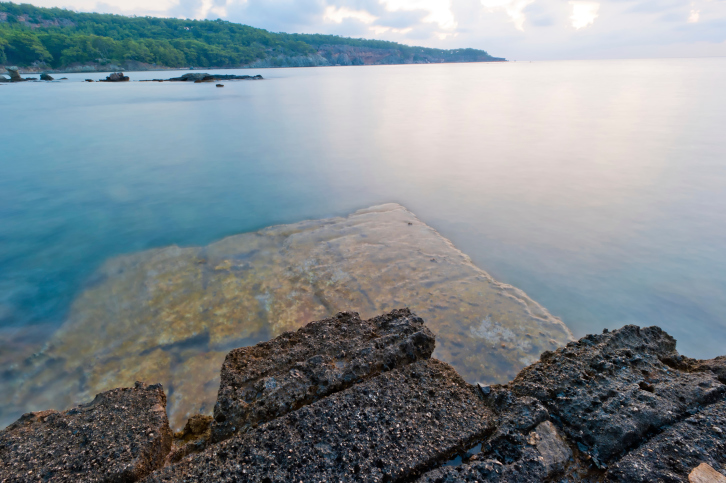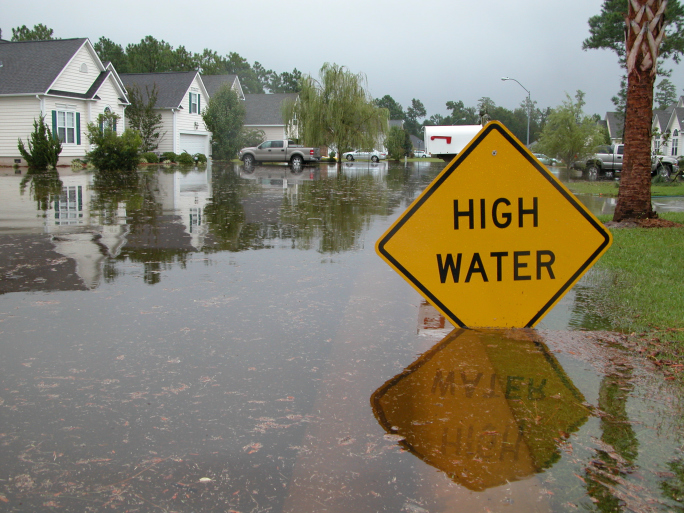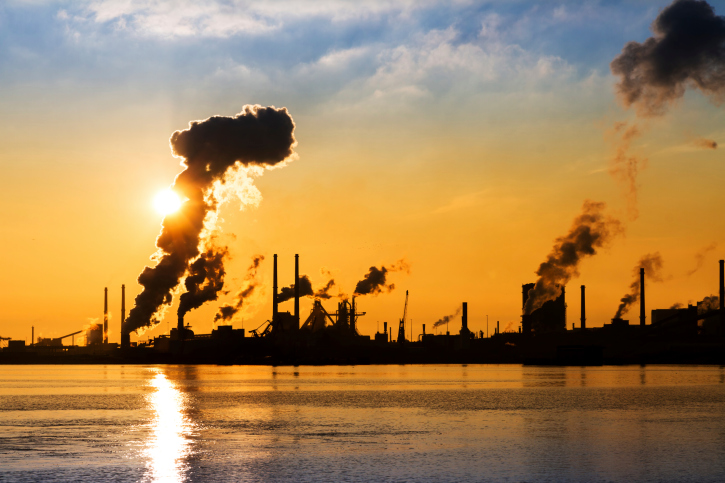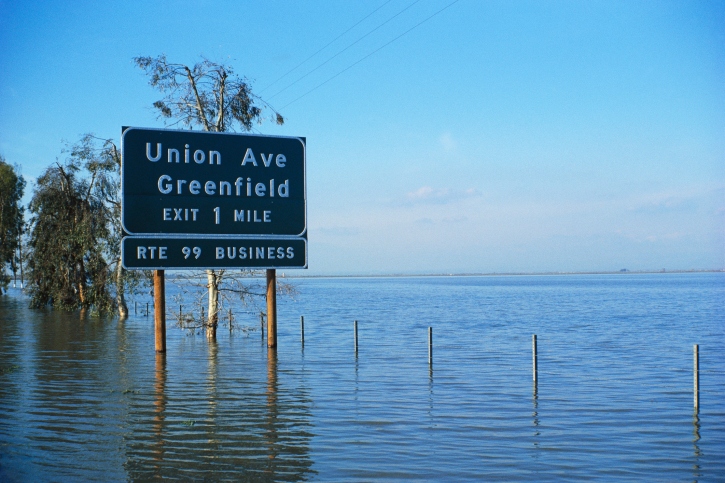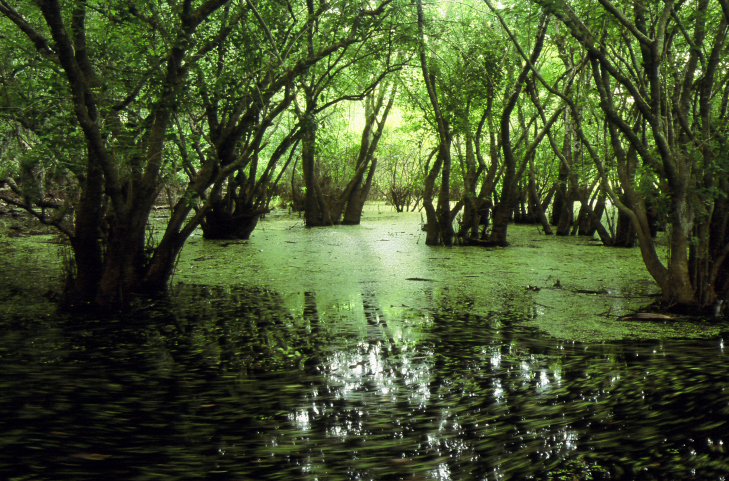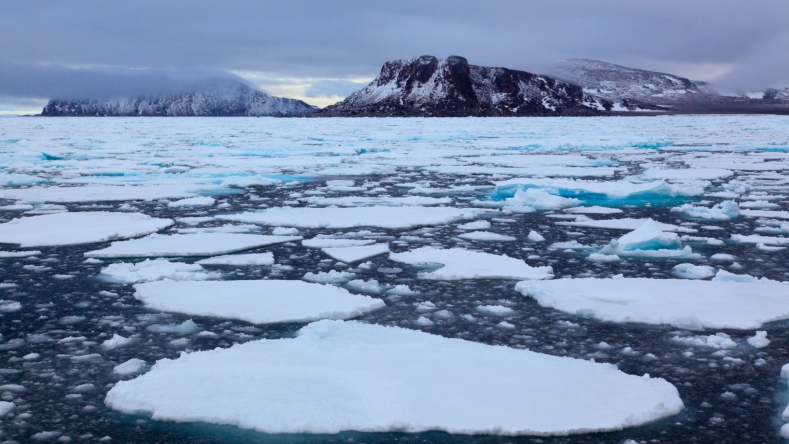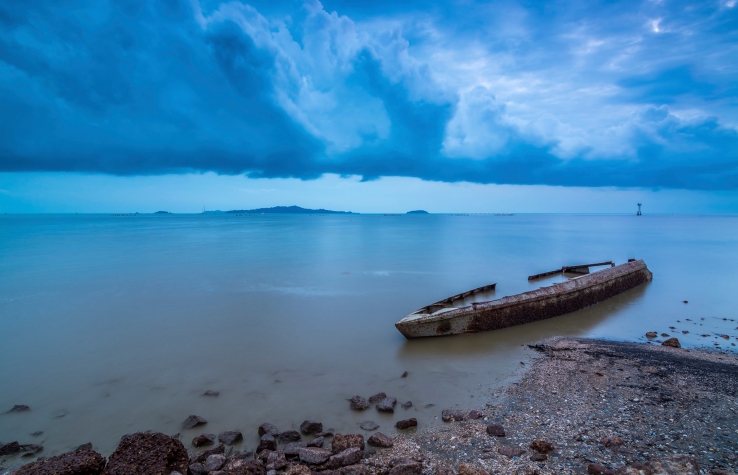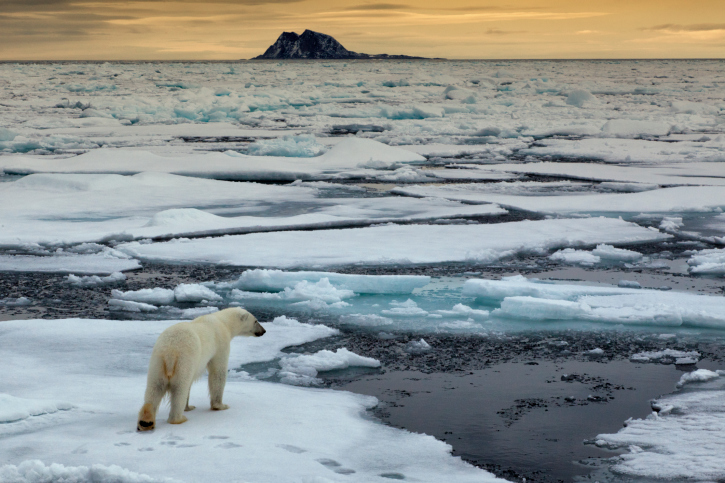There are five major factors that will determine how bad things get: thermal expansion (water expands as it heats up), glacial ice loss, Greenland ice loss, Antarctic ice loss, and changes in land water storage. Combined, these factors are likely to cause a significant rise in ocean levels—with disastrous results.
10Endangered Archaeological Treasures
While most experts are focusing on the dangers of climate change to coastal city infrastructure, some are growing worried over another alarming trend. Valuable cultural sites and archaeological artifacts all over the world risk being lost or destroyed thanks to rising sea levels. Scientists already think that there is little hope of saving all of the threatened sites, and are calling for risk assessment studies to target the ones most at risk. North American sites along the Atlantic and Gulf coasts are especially endangered because those coastal areas are already unstable. In the US, the National Park Service and the Center for Ocean-Atmospheric Prediction Studies at Florida State University are fighting to protect prehistoric shell mounds constructed over thousands of years along Florida’s beaches, which are in danger of being washed away by rising sea levels. Researchers believe that the giant mounds were originally constructed as foundations for settlements, and later served as navigational aids to European sailors.
9The Effects Of Rising Sea Levels On Islands
Islands possess about 20 percent of the world’s biodiversity. A new study that looks at three possible climate change scenarios and their effect on 1,269 French islands has found that things could be even worse than we imagined, with up to 11 percent of those islands sinking completely, along with their biomes. Taking the French islands as representative of the world, 10,800 islands could be lost forever even under the most optimistic scenario. One thing that surprised researchers was the variability in the distribution of risk. The Pacific atolls, for example, stand to lose a full third of their land mass, while some volcanic islands will probably only lose a few percent. Bad as this is, experts are just beginning to understand that the secondary effects of rising sea levels, such as the forced migration of islanders into the interior, may do even more to damage the fragile island ecosystems, potentially rendering many islands uninhabitable.
8Iconic Coastal Resorts May Not Survive
Do you have a favorite beach? Well by the end of the century it may no longer be there. Andrew Cooper, Professor of Coastal Studies at the University of Ulster, has warned that rising sea levels are threatening our coastal resorts and beachside properties—and that our response to the threat is only making things worse. Up until now, our beach-based response to climate change has mostly been to hem the area in—building walls in order to stop encroaching waters. But when water levels rise, the natural tendency of beaches is to move inland. When walls and development make that impossible, the beach will simply drown. This puts some of the world’s most famous beaches at risk, from Australia’s Gold Coast to Florida’s West Palm Beach to Dubai, which is the world’s most rapidly developed coastal resort city. Cooper says that most of these beaches could be saved if resort areas were preplanned to allow for beaches moving inland. However, current preservation efforts using beach nourishment techniques and protective infrastructure are problematic and are already being hampered by climate change skepticism, a lack of political will, and short-term thinking. To give an example of how bad the problem already is, much of Jamaica’s famous Seven Mile Beach is currently vanishing. Despite careful tending, the Jamaican National Environment and Planning Agency says that the sands are eroding at a rate of over 1 meter (3.3 ft) a year and continuing climate change is expected to increase that rate—with devastating effects on the country’s economy.
7Nuisance Flooding Is A Growing Problem
Since the 1960s, the United States has seen a marked increase in “nuisance flooding“—flooding that causes road closures, blocked storm drains, and other infrastructure damage. The majority of the increased flooding has taken place on the East Coast, but all three coasts have been effected—and the culprit is rising sea levels. A new report maintains that further sea level rises will bring about related increases in the duration, intensity, and frequency of nuisance floods. The report’s lead author, oceanographer William Sweet, stressed that in the near future it won’t take a strong storm or a hurricane to cause flooding: “The effects of rising sea levels along most of the continental U.S. coastline are only going to become more noticeable and much more severe in the coming decades, probably more so than any other climate-change related factor.” The worst-hit city so far has been Annapolis, Maryland, with an average of 39.3 days of nuisance flooding between 2007–2013. This represents a 925 percent increase over the city’s nuisance flood days between 1957 and 1963.
6And Severe Flooding Will Put Millions At Risk
A new report published in the journal Environmental Research Letters concluded that nearly four million Americans are going to be at risk from severe flooding caused by rising sea levels. The report determined that at least 2.1 million housing units lie within one vertical meter (3 ft) of the high tide mark, an extremely worrying figure considering that even the most optimistic models predict a 1-meter rise in sea levels by 2100. An accompanying study found that out of 55 US locations studied, a majority could expect to see an increase in storm-driven high water levels over the next half-century. High water levels previously witnessed only once in a century will soon be likely to occur as often as once a decade. Ben Strauss, the co-author of both papers, says that rising sea levels will make every single coastal storm flood higher, and with storms already increasing in intensity because of climate change-related factors, “the odds for major damage get bigger every year.” The areas that will be hardest-hit are the states surrounding the Gulf of Mexico (Florida will be the most vulnerable in terms of population). But with California, New York, and New Jersey also singled out by the report, every coast is in danger.
5Speaking Of New Jersey
Globally, scientists predict that one of the locations most likely to be impacted by rising sea levels is the New Jersey shore. While some might consider that a rare upside to climate change, geoscientists at Rutgers and Tufts universities predict that the state’s coastline will likely see an increase of 0.5 meters (1.5 ft) by 2050, rising to around 1.1 m (3.5 ft) by 2100. That’s about 28–38 centimeters (11–15 in) higher than the global average predicted for the end of the century. Historically, the rate of rising over the last half century has only been 3–4 millimeters per year. The report also suggests that by 2050 there will be a 1-in-10 chance per year of a flood exceeding all previously reported floods in the region, meaning that disasters like Superstorm Sandy—which made landfall on October 30, 2012, with its strength exacerbated by a rise of only 20 centimeters (8 in) over the last century—could become much more common in the area. Even that relatively small sea level change has been estimated to have exposed 83,000 additional people in New Jersey and New York to the effects of Sandy, so just imagine the toll that additional rising will take on the region.
4Coastal Wetlands Could Disappear
In 2010, a study in the journal Geophysical Research Letters had researchers concluding that wetlands worldwide, including several along the US Atlantic coast, were in even greater danger of disappearing than previously thought. In the most pessimistic scenarios, most of the world’s coastal wetlands will be gone by the end of the 21st century. In more optimistic projections, those wetlands with high sediment availability may survive, while those with low sediment availability and low tidal ranges—such as Plum Island Estuary in New England and North Carolina’s Albemarle-Pamlico Sound—are likely to drown. Earlier assumptions had placed around half of the world’s wetlands in danger, but the newer study incorporated factors like varying rates of sea level acceleration and inundation, plant growth, organic matter accretion, and sediment deposition to obtain a more accurate vision of climate change’s impact. Our wetlands are responsible for providing protection from coastal storms, help to preserve shorelines and protect our cities, support local economies, absorb pollutants, and are critical habitats for migratory birds and thousands of other species. All of that is now threatened by rising sea levels.
3Antarctica’s Ice Could Raise Sea Levels Faster Than Previously Thought
Although once thought to play a relatively minor role, the discharge from melting ice in Antarctica has now been confirmed as a key factor in the future of rising sea levels worldwide. A recent study used state-of-the-art climate models and observational data to reveal that Antarctic ice could be responsible for a rise of up to 37 centimeters (15 in) this century alone. Currently, Antarctica is contributing less than 10 percent of increasing sea levels, but rising global mean temperatures and the associated increase in greenhouse gases will soon change this. Together, Antarctica and Greenland (another large contributor to ice discharge into the oceans) will have the potential to raise sea levels by several meters over the next few centuries. This new information indicates that Antarctica’s discharge will be much greater than anticipated even by the upper end of the most recent IPCC projections.
2Groundwater Inundation Will Make Things Worse
When sea levels rise, groundwater tables rise along with them, resulting in even greater flooding in coastal areas. Until recently, the possible additional effects of groundwater inundation haven’t been used when trying to predict the effects of sea level rises in the future. In 2012, a study conducted by the University of Hawaii changed all of that. Scientists had previously recognized and talked about the problem, but this was the first time that anyone had actually assessed the effects of including groundwater dynamics. They were surprised to find that regions in which groundwater inundation is a problem produce up to twice the flooded area as regions at risk from marine inundation alone. This is very bad news for coastal cities. Improving our understanding of groundwater inundation can help city planners come up with ways to protect us. For example, by using groundwater withdrawals (usually the process of obtaining drinking water from groundwater) to pump even brackish water out of the ground in an effort to mitigate the effects of a rising water table.
1We Have Already Triggered Irreversibly Rising Sea Levels
According to a 2012 paper in Environmental Research Letters, even if we do somehow manage to stabilize human-related climate change by the end of the century, water levels will still continue to rise for thousands of years. The study was the first to take into account all of the Earth’s land ice along with the ocean’s thermal expansion. According to co-author Philippe Huybrecht: “Ice sheets are very slow components in the climate system; they respond on time scales of thousands of years.” It’s this long-term reaction, combined with the long lifetime of greenhouse gases in the atmosphere, that make the consequences of climate change so irreversible. In all the possible scenarios examined, the study found that the Greenland Ice Sheet was responsible for over half the increase, with the thermal expansion of the oceans coming in second and glaciers and other ice being the least contributors (although computational restraints make it hard to account for the world’s 200,000 individual glaciers). Professor Huybrechts notes that polar ice sheets contain an additional 65 meters (213 ft) of equivalent sea level, and if climate change ends up severe and long lasting, it will eventually all melt. However, that doesn’t mean we should do nothing. Scientists overwhelmingly agree that only a drastic lowering of greenhouse gas emissions to the lowest possible level, as soon as possible, can prevent the harsher effects of climate change. Let’s hope we can find the political will and means to do so in time. Lance LeClaire is a freelance artist and writer. He writes on subjects ranging from science and skepticism, atheism, and religious history, to unexplained mysteries and historical oddities, among other subjects. You can look him up on Facebook, or keep an eye out for his articles on Listverse.
